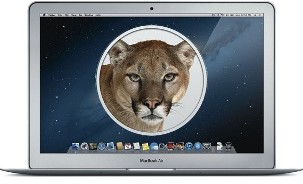What started off as a minimalist search engine is now just so much more. Google has been very popular for introducing new and synergetic web services for its users. Some of these include Google maps, Google News, Google Reader, Google Adsense, Google Plus, YouTube, Google Docs, Google Wallet, Google Chrome, Google Translate, phew! There are so many, that if we start counting them and observing their effects on every internet user, the end result will be phenomenal. Google, for sure, is the ruler of the entire web, and it is slowly expanding itself to contend with competitors and further meet customers’ demands.
How did it start?
Let’s focus on a couple of services (out of the several others) that Google has been providing for quite a while now. Let’s have a look at Google Music, Google books (a.k.a Google eBook store), and Android Market. Google Music was rolled out as a competitor to the music streaming and downloading services on the web, namely Spotify, Rdio, and particularly, iTunes. Google books were introduced as an eBook store where people could download eBooks for their tablets and other portable reading devices (particularly Android-based ones). This was in response to the several eBook providers on the web, like Amazon or Apple’s iBookstore (which started attracting a lot of people as soon as it was launched along with the iPad).
With the launch of the Android mobile platform, the Android Market also came into being. The first goal was to satisfy the increasing demand for apps on the platform, since the number of apps for iOS (the operating systems for Apple’s mobile devices) was rapidly increasing on Apple’s App Store, and customers preferred iOS over Android due to the number and quality of apps available in the App store. Soon enough Android emerged as a tough competitor to Apple’s iOS.
Alongside apps, the Android Market also brought movie rentals (Google Movies), which was clearly an answer to Apple’s iTunes Movie Rental services. Since android is the reason Apple and Google are in competition, Google more or less rolled out all the same services to attract users towards Android from Apple. However, there’s one thing Google was missing – unified access to all of these services.
Apple’s services are all beautifully enclosed in the form of iTunes (iTunes Store), within which you can find music, movies, apps, books, and much more. It’s like visiting a supermarket to get everything you want, instead of visiting several different shops. Initially, it seemed like that market was exclusively for the Android platform, but Google rectified the situation with Google Play.
There’s not much new about Google Play, to be honest. Basically Google has integrated Music, Google eBook Store, and android Market in one place. So that consists of four major categories: music, movies, eBooks, and Android apps. Sounds iTunes-ish, right? I wouldn’t call it just an iTunes Store rip-off straight away, though. Google have definitely applied a lot of research and development to this thing, and so far, users seem to be satisfied with it.
Google Play replaced the Android Market?
Although Google Play is most suited for those with an Android mobile device, users without such devices can also access Google Play and download content compatible with whatever device they are on. So if you thought it was just a new name for Android Market, think again. Although out of four services on Google Play, the music, movies, and books content is currently not available in most countries. So that leaves the Android Market section in what’s available. Hopefully, Google Play’s music, movies, and books will be made available in Pakistan as well soon.
It’s in the Cloud
Here comes the best bit about Google Play. All of the content you purchase or download is saved in the cloud, which means it is available and accessible on all your devices (provided you have internet access). But then again Apple’s iCloud works the same way all your iTunes’ purchased content is available on all the Apple devices you own. You can purchase content on one device, and it is automatically sent to any other device you own (provided it is also linked with the account you’re using for Google Play).
Why did they do it?
As mentioned earlier, Google wanted to bring all of their digital goodies in one place, to make it more accessible to users. Another reason for this was to open up these services to more and more people, even those without Android devices. For instance, Google initially rolled out movie rentals on Android Market, but doing so confined the service to Android users only. By eliminating the ‘Android’ banner, Google Play aims to hit a wider audience, by ensuring them that this entire collection of digital media is targeted towards everyone.
As far as the Android Market app on your Android device is concerned, it will be updated to Google Play Store very soon. Overall, it is a reasonable step by Google in order to cope up with rising competition in the digital media world.


